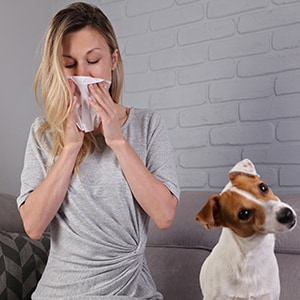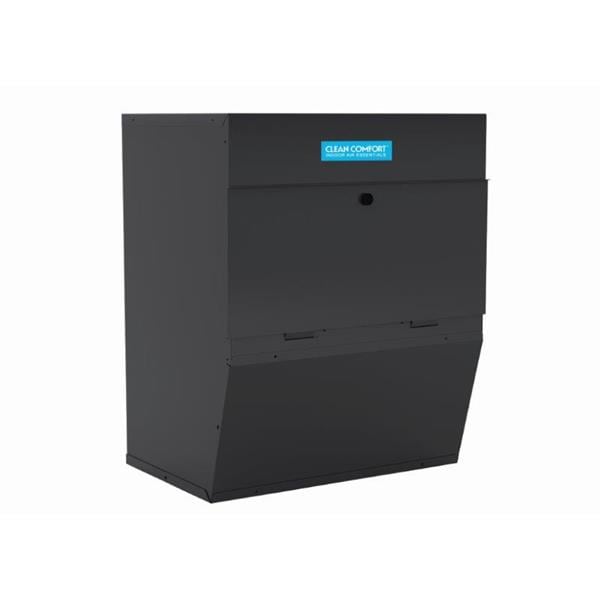What Does an Air Purifier Do?
Air Purifier Buyers Guide
Buildings are making us sick. There is a strong correlation between the rise in antibiotic-resistant superbugs, allergies, and autoimmune diseases over the past 100 years with advances in building technology.
As we make our buildings tighter, dryer, and more efficient, we're sealing ourselves up with indoor air pollution. There is even a medical condition called sick building syndrome that describes a wide range of physical and psychological problems caused by poor indoor air quality.
One way to fight sick building syndrome and the spread of infection is with a home air purifier.
What Does an Air Purifier Do?
An air purifier is any device that physically removes pollutants from the air. Unlike ventilation, which replaces the air itself, air purification specifically targets airborne contaminants such as dust, bacteria, pollen, and more.
Benefits of Air Purifiers
As opposed to portable air purifiers which only clean a single room or space, whole-house air purifiers are professionally installed in your central HVAC system and clean the air before it is distributed around your home.
Not all air purifiers clean the air in the same way, however, and some capture more contaminants than others. The list below outlines general benefits of air purifiers, but it doesn't apply to all units. Air purifiers are not a replacement for proper personal hygiene and medical care.
Remove Allergens

Capture Smoke
Have a smoker in the house? An air purifier for smoke can make it less obvious. It can trap some of the smoke before it stinks up the place and stains the walls, carpeting, and furniture.
Eliminate Odors
In addition to smoke, air purifiers can help remove cooking and bathroom odors. That's helpful when you don't want to smell your dinner five hours after eating it.
Neutralize Viruses & Bacteria
Some air purifiers, like HEPA filters, can remove more than 99% of airborne bacteria, mold spores, and even viruses from the air passing through them. That gives you extra peace of mind during flu season or infection outbreaks.
Trap Dust
Air purifiers can make cleaning easier by capturing much of the dust before it has a chance to land on surfaces.
Improve HVAC Operation
If installed on the return side of your HVAC system, air purifiers will remove contaminants from the air before they reach the blower. This will put less strain on the system, improve performance, and help increase longevity.
How Does an Air Purifier Work?
Whole-house air purifiers work differently depending on their type. The main types of air purifiers are HEPA filters, air cleaners, ultraviolet (UV) lamps, and ionizers.
HEPA Air Purifiers

Due to their extremely high capture rate, whole-house HEPA air purifiers must be installed in a way that bypasses the main return line to the HVAC system. Otherwise, they would starve the system of air. That's why only a professional should install them. They can either stand on the floor or be mounted on the ceiling or wall.
The main filter inside the HEPA purifier should be replaced roughly every 2-3 years. Activated carbon filters should be replaced roughly twice per year.
Air Cleaners
Electronic air cleaners work like magnets to attract and remove pet dander, dust, and other pollutants as small as 0.3 microns. Their effectiveness is reduced as they become covered in dust. Fortunately, they can be taken out, washed, and reinserted. No need to buy replacement filters, so it's a one-time purchase.
Media air cleaners typically capture varying amounts of pollutants depending on their MERV rating, or capture rate. Higher-rated filters can capture smaller particles. Media air cleaners are typically less expensive than electronic air cleaners, but you need to replace the filter every 30-90 days, depending on how dirty it gets.
Neither electronic or media air purifiers are very effective against bacteria and viruses unless the organisms are very large. They also cannot remove odors. However, they both provide ample protection against common air pollutants and will help you breathe better at home for a lower cost than a HEPA purifier.
Ultraviolet Air Purifiers
UV lamps channel this power to purify your home's air. Installed in your HVAC system or plugged into a wall, UV lamps treat passing air and neutralize bacteria and viruses. They can also clear existing microbial growth from HVAC coils, restoring your system to optimal efficiency.
UV bulbs typically burn for roughly 9,000 hours, or one year. After that, you might still see blue light (caused by argon gas) but the UV-C energy will be depleted. So, make sure you replace the bulb once per year to maintain proper purification.
Ultraviolet light is, without a doubt, the most effective air purifier for inactivating living organisms that cause illness. However, light intensity, installation location, and exposure time all play a role in how many bacteria, viruses, and/or mold spores the UV can kill. It also can't capture dust, smoke, pollen or other nonliving things. That's why UV lamps are often used in conjunction with other air purification systems, such as HEPA filters. Learn more about UV lamps.
Air Ionizers
Whole-home air purifiers can be effective at eliminating more than 99% of indoor air pollutants. However, you need to supplement them with regular cleaning and dusting because the contaminants will fall to the floor and furniture. Ionizers also require a power cell replacement roughly every 25,000 hours or 2-3 years.
Are Air Purifiers Worth it?
You shouldn't have to sacrifice indoor air quality for a tight, energy-efficient home. Most whole-house air purifiers cost only a few hundred dollars plus installation but will work for years with proper maintenance.
Especially for individuals suffering from allergies, asthma, sick building syndrome, and other health-related issues, air purifiers can create an environment more conducive to overall well being. They are a worthwhile way to help you breathe better at home and have peace of mind.
